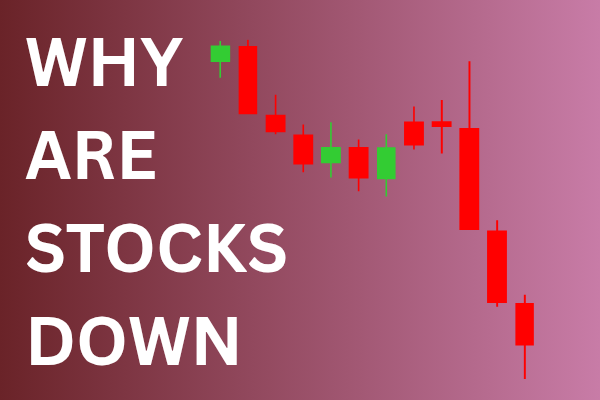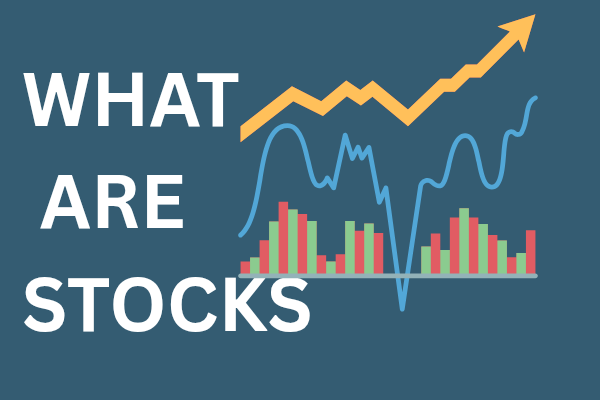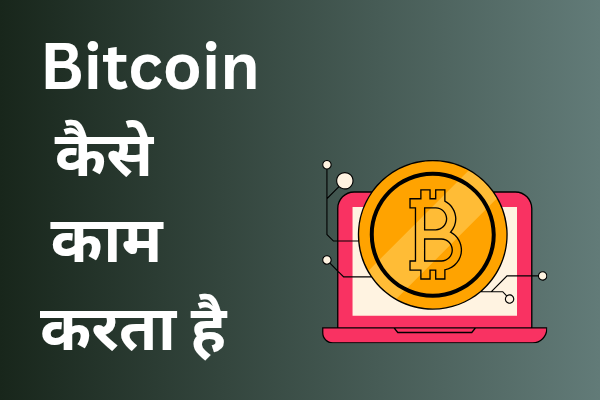The Indian stock market, including the NSE Nifty and BSE Sensex, has been incredibly volatile lately. Investors suffered significant losses as a result of the market’s multiple steep drops in 2025, particularly up until mid-July. Investors are worried after the Sensex and Nifty fell hundreds of points. The main causes of the stock market decline in 2025, as well as its consequences and potential investor strategies, are covered in detail in this article. To make it easy for all readers to understand, we shall offer it in Hindi using straightforward language.
The main reasons why the stock market fell
1. Global Economic Uncertainties
The dynamics of the stock market are significantly influenced by the state of the world economy. The Indian stock market has been under pressure in 2025 due to a number of international reasons.
- US trade policy uncertainty: Global markets have been impacted by the uncertainty surrounding former President Donald Trump’s US trade policies, especially with reference to trade tariffs (import charges). Global financial markets experienced a sell-off in July 2025 as a result of investor fears over the tariff measures put forth by the Trump administration. India, which has strong ties to international trade, was not immune to this effect.
- The second-largest economy in the world, China, is experiencing economic difficulties in 2025. International investors were alarmed by the decline in its real estate market and the poor economic figures. This downturn also had an effect on the Indian market, which is influenced indirectly by the Chinese economy.
- Geopolitical tensions: Market volatility has been exacerbated by the Middle East Israel-Iran conflict as well as other international geopolitical concerns. An oil-importing nation like India has inflation and a trade deficit as a result of these tensions, which also affect oil prices.
2. Overvaluation Concerns
In 2025, the Indian stock market, particularly the Nifty 50, continued to trade at historically high prices. The price-to-earnings (P/E) ratio of the Nifty 50 was greater than usual, which alarmed investors who thought the market boom was about to burst.
- Buffett Indicator: India is “modestly overvalued” based on its entire market capitalization as of February 2025, which was 114.46% of its GDP. An significant measure for investors is the Buffett measure, which contrasts GDP and market capitalization.
- Excessive mid- and small-cap stock prices: In particular, mid- and small-cap stock valuations were considered exorbitant. A diversified asset allocation strategy is advised for investors in various industries by numerous experts, including S. Naren.
Because of the high valuations, investors begin to book profits if the market encounters a negative trigger (such as poor quarterly results or unpredictability on a global scale), which causes the market to decline.
3. Foreign portfolio investors (FPIs) selling
In the Indian stock market, foreign portfolio investors, or FPIs, are extremely important. FPIs sold a lot of Indian stocks in 2025, particularly starting in October 2024, which caused the market to plummet.
- Increase in US bond yields: Foreign investors were more inclined to invest in US assets than Indian stocks as a result of the increase in US bond yields. This occurred particularly after the Federal Reserve lowered interest rates, which increased the appeal of US bonds.
- Strong US currency: In Indian markets, a strong US currency made investments less alluring. The market was under pressure as a result of FPIs withdrawing their money from India.
4. Weak Corporate Earnings
The second quarter of 2025 (Q2 FY26) saw a varied set of earnings results from Indian corporations. Numerous large corporations underperformed, particularly in the banking and information technology (IT) industries.
- Challenges facing the IT sector: Major players like Infosys and Tata Consultancy Services (TCS) posted second-quarter profits that were below expectations. For example, Infosys recorded a net profit of ₹6,506 crore, which was less than the projected ₹6,700 crore, and TCS’ net profit was below forecasts.
- Selling pressure: Investors were upset by the weak earnings figures, which caused a sharp decline in IT stock prices. Important market indices like the Sensex and Nifty fell as a result of this pressure.
5. Increasing interest rates and inflation
India’s inflationary pressures persisted into 2025, impacting the Reserve Bank of India’s (RBI) monetary policies.
- RBI policies: The RBI raised interest rates in response to rising inflation, which made borrowing more expensive for both consumers and businesses. For instance, the demand for real estate declined as a result of rising home loan rates, which had an effect on real estate businesses’ share values.
- Effect on consumer demand: Consumer spending was affected by higher interest rates, which therefore reduced demand across a number of industries, including consumer durables and autos. The stocks of the corresponding companies were affected by this.
6. Risk of Leverage
In the stock market, leverage, or borrowing to invest, has two sides. Profits are increased during market booms, but losses are multiplied many times during market declines.
- Margin calls: Leveraged investors are forced to liquidate their assets rapidly when stock prices decline due to margin calls. The market downturn is further accelerated by this enormous sell-off.
- Market indexes fell further as a result of the negative feedback cycle that such selling produced.
7. Panic Selling and Investor Sentiment
The dynamics of the stock market are significantly influenced by investor sentiment. Panic selling occurs when investors become alarmed by bad news, such as poor financial results or unpredictability in the world.
- Market speculation: According to certain analysts, including Robert Kiyosaki, the “biggest stock market crash in history” will occur in February 2025. A sell-off resulted from the increased investor anxiety caused by such speculation.
- Sentiment effect: Investors swiftly left the market due to speculation of a market drop, which exacerbated market volatility.
Conclusion
The stock market’s decline is a normal occurrence that can have a variety of causes, including technical, emotional, global, and economic ones. A prudent investor is one who is aware of these factors and makes well-informed choices. Markets fluctuate, but they eventually rise again. You cannot become a successful investor without patience and knowledge.
If you find this blog post useful then please follow this page, all the information related to finance is given on this website and inform other people by sharing this page. Thank you.








